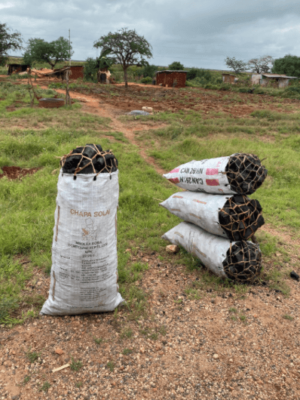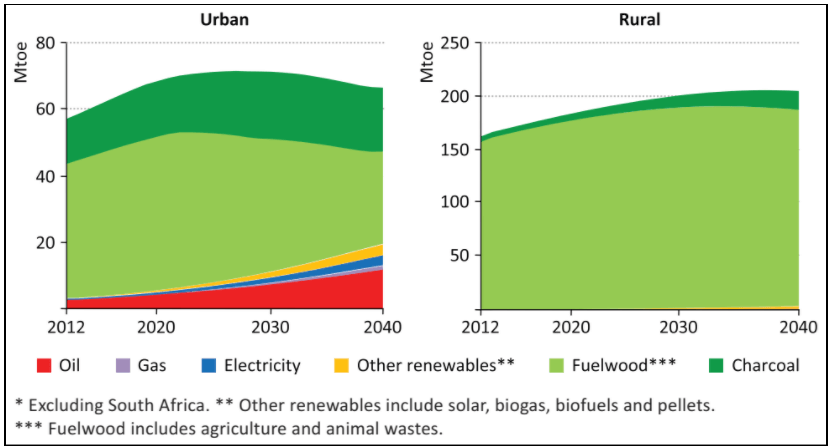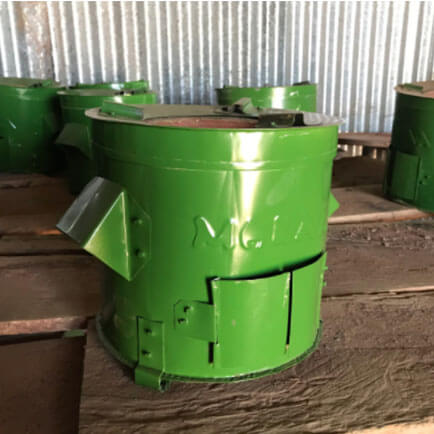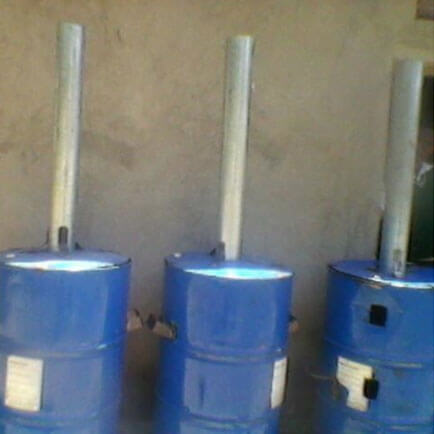Why Charcoal?
Access to energy for clean cooking is a daily challenge for 2.7 billion people around the world. 1 Wood and traditional wood charcoal remain the most widely available household energy source for over 80% of the population in sub-Saharan Africa.

The Problem with Charcoal
- Dependence on unsustainable wood and traditional wood charcoal leads to deforestation and degradation
- Use and production of charcoal based on unsustainable practices contributes to climate change because of greenhouse gases and particulate matter emitted.2 New charcoal production technologies such as sustainable wood harvesting and improved kilns with gas flaring neutralize GHG emissions.
- Using wood and charcoal in inefficient cookstoves causes household air pollution and leads to 3.8 billion deaths per year.3
- Charcoal remains the cooking fuel of choice in urban areas and demand is expected to grow through 2030 in sub-Saharan Africa.4
Projected Household Cooking Fuel Consumption in Sub-Saharan Africa 5

What Can be Done?
- Transition consumers away from wood fuels where possible to more modern and clean fuels like ethanol or solar
- Replace traditional charcoal with sustainable or “eco-charcoal” made from renewable sources or waste streams
- Upgrade consumers to efficient and cleaner burning cookstoves
- Improve production efficiencies of traditional charcoal to reduce greenhouse gas emissions and deforestation



1 World Energy Outlook 2018
2 Short-lived climate forcers (SLCFs) include black and organic carbon (BC and OC) aerosols and methane (CH4)
3 World Health Organization: https://www.who.int/news-room/fact-sheets/detail/household-air-pollution-and-health
4 Analysis of the Charcoal Value Chain in Kenya, Ministry of Environment, Water and Natural Resources, 2013
5 Africa Energy Outlook 2014, International Energy Agency

